Matador Network's Blog, page 1163
February 12, 2019
Alternative designs for Sydney Opera

The Sydney Opera House is Australia’s most iconic landmark and a UNESCO World Heritage site. Its design, defined by the large, concrete shells that tower above Sydney Harbor, was created by architect Jørn Utzon and was chosen among 223 entries in a 1956 international competition to build “a National Opera House at Bennelong Point, Sydney.” And boy are we ever grateful they picked Utzon’s design over the rest. See what the Sydney Opera House could have looked like with the following seven alternative designs superimposed into Bennelong Point by Australian insurance brand Budget Direct.
Second Place: A design from Philadelphia Collaborative Group
Seven designers from Philadelphia nearly won the competition with this concrete design that, thankfully, never saw the light of day.

Photo: Budget Direct
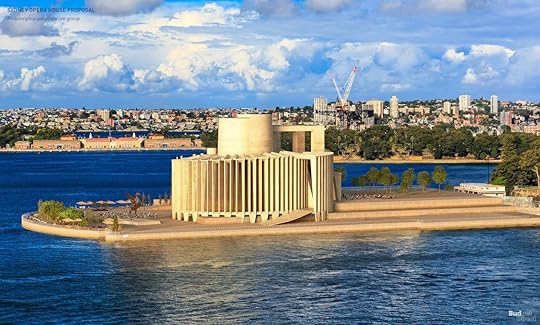
Photo: Budget Direct
Third place: Paul Boissevain and Barbara Osmond’s design
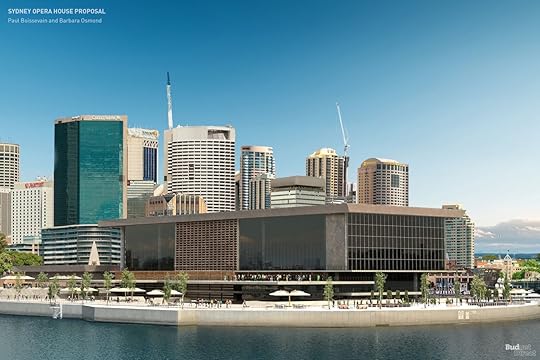
Photo: Budget Direct

Photo: Budget Direct
Honorable mentions:
Sydney Symphony Orchestra conductor Sir Eugene Goossen’s proposed design

Photo: Budget Direct

Photo: Budget Direct
Peter Kollar and Balthazar Korab’s design proposal

Photo: Budget Direct
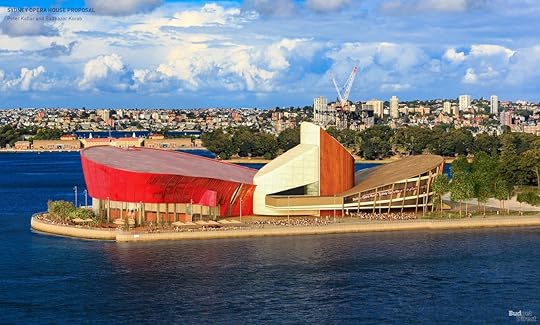
Photo: Budget Direct
S. W. Milburn and Partners’ design proposal
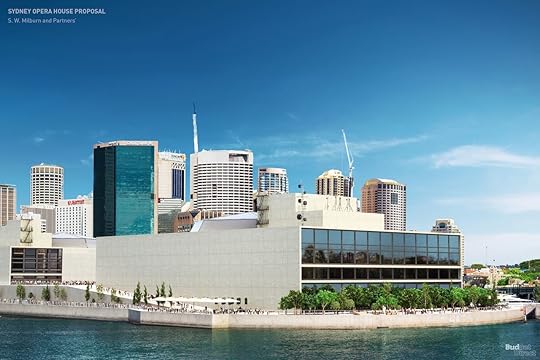
Photo: Budget Direct
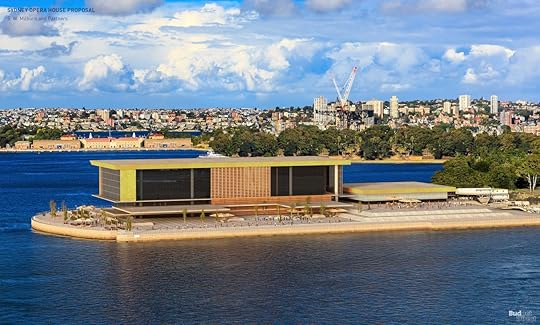
Photo: Budget Direct
Vine and Vine’s design proposal
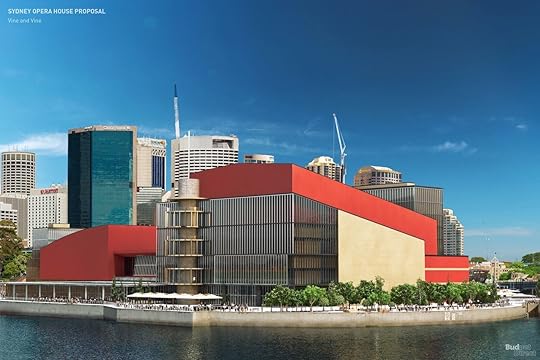
Photo: Budget Direct
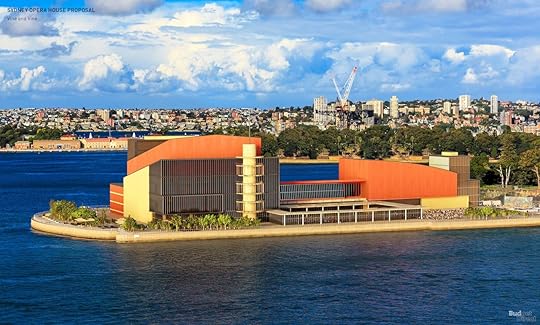
Photo: Budget Direct
Kelly and Gruzen’s design proposal


Photo: Budget Direct
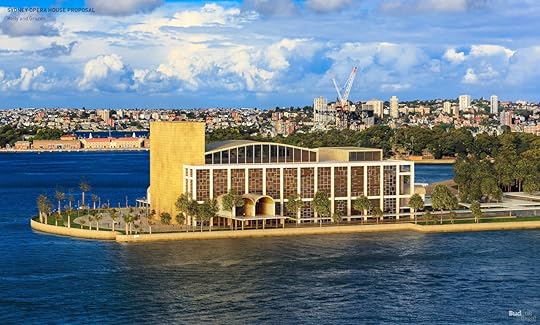
Photo: Budget Direct

More like this: This rejected design shows what Central Park almost looked like
The post This is what the Sydney Opera House could have looked like appeared first on Matador Network.

Is it sauce or gravy? The answer

Americans love Italian food. They love the ubiquitous foods like pizza, pasta, and lasagna, and they even love the harder to find traditional Italian meat dishes like brassato and cotoletta alla milanese. You can find Italian food in every corner of the country, each region with its own slight differences (consider, if you will, the many types of regional pizza styles in the US). No difference has such staunch defenders, however, as the Italian food debate that has nothing to do with the actual food: the language war between calling the stuff that’s poured over pasta “gravy” or “sauce.”
For the most part, it’s not clear exactly who uses which term and why, but that hasn’t stopped food and history enthusiasts from trying to nail down an answer.
“The subject isn’t even argued in South Philadelphia, where even some non-Italians refer to the magnificently smooth pureed tomato masterpiece as gravy,” Lorraine Ranalli wrote in her book Gravy Wars. “Outside of our region, it is usually called ‘sauce.’ How often have I heard the comment, ‘gravy is the brown stuff we put on meat.’”
To make matters more confusing, some Italians argue both terms are wrong. Here’s the case for both so you can be the judge.
People who call it “gravy”
Although it’s the less popular term, some of America’s most prominent and famous chefs use gravy. Take Rachael Ray, who has a recipe for Sunday Gravy that’s perfect for large portions of spaghetti. Although, it should be noted, she also has a recipe for the type of gravy that people put on the Thanksgiving turkey called No Fail Gravy.
In the UK and its former colonies, gravy refers to any meat-based sauce. Americans generally lost the distinction between meat-based and non-meat-based over time, but certain regions held onto it — including when talking about Italian food. Ranalli told Slate that regions that say they pour gravy over their pasta include Philadelphia, the Bronx, east Boston, and Chicago. Also of note: The frequent use of “gravy” in The Sopranos, which is set in Essex County in northern New Jersey.
Here’s the kicker: There’s no similar word or dish for gravy in Italy. The traditional Italian-American dish with red gravy (or sauce) is based on Neapolitan ragu made with meat, tomato, and onion that’s commonly served with pasta. If you visit Naples, you won’t find the word “gravy” on any menus.
Historians speculate that families who immigrated earlier used “gravy” to reflect the names of dishes they saw in America in order to better assimilate. Assimilation meant changing their language and/or approach to food. So, when they made a thick sauce that they poured over a meal, they called it gravy. Later generations often used sauce, the term more popular when they were growing up.
People who call it “sauce”

Photo: Lisovskaya Natalia/Shutterstock
Sauce is the more common term. The word makes sense, as it directly translates to salsa, which Italians use more often.
“We don’t have a ‘gravy,’” Franca Riccardi, the director of language and culture programs at the America-Italy Society of Philadelphia, said. As an Italian-American living in Pennsylvania, I thought she might be familiar with the term. Instead, she said salsa is best for a tomato-based sauce.
You’ll hear the term “sauce” in major cities like Denver and Miami, and in small towns like Asheville and Orange Beach, Alabama. Also from the cast of Jersey Shore, who break from The Sopranos in northern New Jersey when it comes to sauce vs. gravy (and many other things in life). It’s also more likely to be used on restaurant menus and in cooking shows. However, Riccardi said it’s usually used for lighter sauces, which is one point where she agrees with team “gravy.” If you use meat or other condiments, you should say “sugo” or “ragu.”
Sauce is accepted as the general catch-all term that’s universally understood. Even companies with gravy in the name use sauce, like Jersey Italian Gravy, which describes its product as something that comes from a “specially crafted recipe based on traditional Italian sauces.”
No matter which way you say it, one thing is clear: It’s never “gravy sauce” or “red gravy.” Pick a side and stick to it — and, of course, make sure you match the right sauce (or gravy) to the right type of pasta. 

More like this: HThe wines to drink with 7 iconic Italian dishes
The post Sauce or gravy? The never-ending Italian-American debate appeared first on Matador Network.

Weirdest hotels around the world

The traditional chain hotels, with their cookie-cutter design and bland continental breakfasts are the reason why we tend to spend as little time in our rooms as possible when traveling. Not all hotels, however, are a necessary evil — some are inventive, fun, artsy and destinations in themselves. Whether it’s a hotel with underwater views or one where guests sleep inside massive wine barrels, the following hotels from around the world take the lodging experience to the next level.
1. Kokopelli’s Cave, New Mexico

Photo: Kokopelli’s Cave B&B/Facebook
This cave turned B&B located 300 feet above the La Plata River Valley in New Mexico, is named after a hunchbacked flute player and fertility symbol in the Native American cultures of the Southwest. Guests walk down a sloping path and a set of sandstone stairs to enter a 1,700-square-foot cavern, originally excavated to function as an office for geologist and owner Bruce Black. This unique hotel room 70 feet below the surface is outfitted with contemporary amenities like a jacuzzi, waterfall shower, full kitchen, fireplace, and porches with views of the surrounding desert. A one-night stay costs $340, plus $50 for each additional guest after two, and a two-night stay is $290 per night plus $50 per guest. Kokopelli’s Cave can accommodate up to eight guests.
2. Levin Iglut, Finland
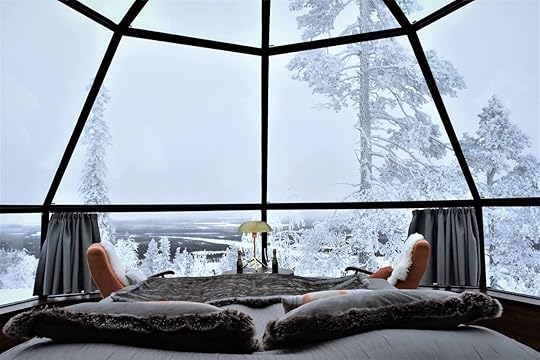
Photo: Levin Iglut – Golden Crown & Restaurant Aurora Sky/Facebook
Seven miles from the town of Levi, in northern Finland, you’ll find the best way to view the northern lights while staying warm and cozy. The fancy glass igloos at Levin Iglut, provide an unaltered view of the starry arctic sky and are equipped with modern conveniences like insulation, kitchenettes, and adjustable beds for optimal sky viewing. They’re also the perfect base from which to enjoy an epic ski weekend in Levi, one of Finland’s most popular ski resorts. Make a reservation online for an unforgettable night in the Finnish lapland.
3. Free Spirit Spheres, Canada
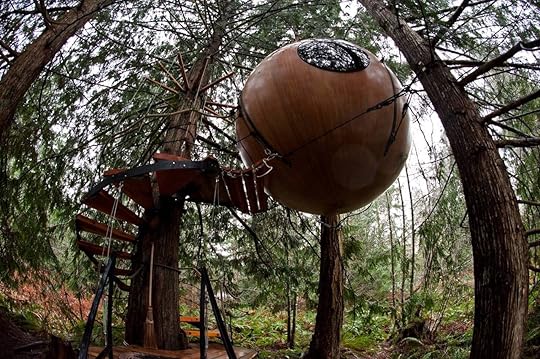
Photo: Free Spirit Spheres Inc/Facebook
If you loved climbing and hanging out in trees as a kid, these spherical hotel rooms will be right up your alley. The Free Spirit Spheres, located on the east coast of British Columbia’s Vancouver Island, are the perfect accommodation for those want to get away from it all and experience something out of the ordinary. The spheres, which hang between the trees, are designed to provide the ultimate escape from the stresses of the daily grind, and an unparallelled relaxation experience. The spheres may look small, but they make very economical use of space. They’re equipped with all the basics, including a bed, kitchenette, and coffee/tea maker. There are three spheres in total, with rates starting at $236 a night for the most basic. To reach this hanging hotel, you’ll have to take a ferry from Horseshoe Bay to Departure Bay, or from Tsawwassen to Duke Point.
4. Hotel de Vrouwe van Stavoren, Netherlands
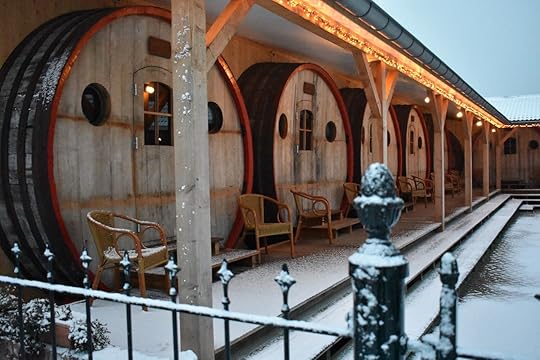
Photo: Hotel de Vrouwe van Stavoren
The Hotel de Vrouwe van Stavoren, in the old harbor town of Stavoren in the Netherlands, lets you look out on the passing ships from the comfort of your very own wine barrel. The 12 rooms, in wooden wine casks, vary in size from 3,900 to 6,000 gallon-capacity and are well-outfitted and cozy. The barrels are equipped with all the essentials, including a sitting room, bathroom with shower, Wi-Fi, sofa, and of course, wine. One of the largest vats has been designated the “Wellness Wine Barrel” and has an indoor jacuzzi and luxury infrared steam cabin.
5. Hotell Utter Inn, Sweden
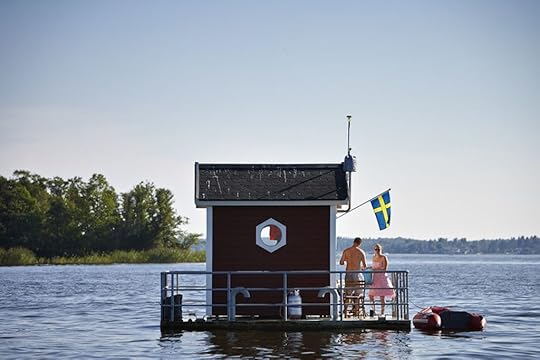
Photo: Visit Västerås
If you’re sick of being kept up late by noisy neighbors or the sound of the city outside your door, the Hotell Utter Inn is the spot you should run to for some R&R as you’ll literally be alone in the middle of Sweden’s Lake Mälar. From afar the place looks like a small, lonely cabin floating on a platform in the middle of the lake, but once inside, you’ll be able to descend via a ladder to a subaquatic bedroom 10 feet below the surface. You won’t be marooned in the little cabin as guests are initially transported to the funky hotel by boat, and given an inflatable boat so they can move about freely. There are several islands nearby ready for exploration, so boredom certainly won’t be an issue.
6. Woodlyn Park, New Zealand

Photo: Woodlyn Park
If you’ve always dreamed to spend some time in the Shire with Bilbo and his furry-footed friends, head over to Woodlyn Park, located on New Zealand’s North Island, just under three hours from Auckland. Woodlyn Park has two Hobbit holes built underneath a hill called the Hobbit Motels. The interiors are designed for regular-sized people, so you won’t have to worry about neck pain during the length of your stay. Each unit has a suite with a queen bed, living area, and kitchenette. There is a separate bedroom with four oversized single beds. In total, each Hobbit hole can sleep up to six people. Rates start at $295 per night for the Hobbit units. The hotel is also conveniently situated just a few minutes’ drive from the famous Waitomo glowworm caves, which make for an excellent day trip. 

More like this: The 7 coziest hotels in Europe you need to curl up in this winter
The post The most unique hotels from around the world appeared first on Matador Network.

February 11, 2019
Scuba sites in Baja California

Baja California is famous for its dramatic landscape of boulder fields, cactus-studded mountains, and nearly 2,000 miles of rugged coastline. While Baja may be arid and earth-toned above water, below the surface it transforms into a colorful and biodiverse ecosystem. Nicknamed the world’s aquarium by Jacques Cousteau, this region is one of Mexico’s most impressive destinations for dive travel, yet it’s often overlooked by tourists in favor of the Yucatán. If you want these stunning sites all to yourself, the time to visit is now. Diving this good won’t stay a secret for long.
La Paz — Espiritu Santo and Los Islotes

Photo: Benny Marty/Shutterstock
If you’re looking for an authentic Mexican experience, La Paz is a great place to get off the gringo trail. It’s a favorite destination for Mexican nationals but feels worlds away from the tourist crowds of Cabo San Lucas. Stroll the Malecon, eat a few fiery seafood dinners, and check out the local organic market for a taste of the real Baja California Sur.
Just an hour offshore, the islands Espiritu Santo and Los Islotes are the gateway to Mexico’s Sea of Cortez. Lucky visitors might spot orcas, dolphins, and whales on the boat ride out. But, the real stars of the show here are the region’s super friendly California sea lions. These underwater acrobats are known for their playful antics and up-close encounters. Springtime is best for diving and snorkeling with the curious pups. Underwater photographers might want to bring a small hand mirror along. Sea lions love interacting with their own reflections and can really ham it up for the camera.
From October to May, whale sharks — the biggest fish in the world — gather in the shallow waters around the bay of La Paz to feed. These gentle giants eat mostly plankton and are perfectly safe for divers and snorkelers. Most encounters take place on the surface where the sharks slowly cruise in search of their next meal.
Cabo Pulmo National Park

Photo: Richard Whitcombe/Shutterstock
Don’t go to Cabo Pulmo expecting luxury hotels or all-inclusive resorts. There’s no nightlife, internet access is spotty, and the drive into town is an adventure. So, it’s a destination best left to more intrepid travelers. But if you’re up to the challenge, you won’t be disappointed. Diving in this national park is some of the best in all of Mexico.
Thanks to decades of protection, Cabo Pulmo National Park has transformed into a scuba diver’s paradise. Once badly overfished, these waters are now known for massive schools of snapper and grouper, mobula rays, sharks, and even the occasional orca. This is the most extensive coral reef in the Sea of Cortez, so you can expect plenty of colorful fish and critters, too. Fall and winter months are best for diving here, especially if you’re hoping to come face to face with the region’s megafauna. Humpbacks, manta rays, and bull sharks are the park’s most famous residents.
If you aren’t a certified diver, Cabo Pulmo still has plenty to offer. There’s excellent snorkeling just offshore and at some of the dive sites. Guided kayaking tours are another excellent option for those who prefer to stay topside.
Los Cabos — inshore diving and Gordo banks

Photo: Lukas Walter/Shutterstock
The twin cities of Cabo San Lucas and San Jose del Cabo are classic Mexican resort towns. All-inclusive hotels dot the coast, and a night out typically includes famous drinking destinations like the Cabo Wabo nightclub. But, it isn’t all bad. Los Cabos is a great jumping off point for some excellent scuba diving, as well as other watersports like fishing and sailing.
A quick boat ride to famous sites like Land’s End and Neptune’s finger will take you straight to the center of Cabo’s underwater adventures. Reef sharks, sea lions, schooling barracuda, and massive grouper make regular appearances at these dive sites. But wildlife isn’t the only draw here. Dramatic underwater rock formations make this one of the most topographically interesting areas to dive in all of Baja.
If you’re up for the hour-long boat ride, the Gordo banks submerged seamounts are well worth the trip. During fall months, these far offshore sites become a magnet for large pelagics like sharks and rays. While hammerheads, bull sharks, and mobulas make for the most exciting encounters, massive schools of tuna, snapper, and jacks also gather here.
Revillagigedo Islands and Guadalupe

Photo: Stefan Pircher/Shutterstock
Home to powerful Pacific currents and open ocean conditions, this diving area isn’t for the faint of heart. It’s only accessible via liveaboard, and the boat ride takes an entire day. But visitors who are up to the challenge will be well rewarded. Because of the remote nature of these sites, advanced scuba certification and experience are required for all visitors.
At Socorro, don’t dive here expecting to see coral. These offshore seamounts and pinnacles are known for their dramatic drop-offs and plummeting walls of solid rock. But what Socorro and the Revillagigedo Islands lack in reef life, they make up for in big fish. This area is known for one-on-one encounters with whale sharks, dolphins, and manta rays, as well as a chance to spot silky, Galapagos, and hammerhead sharks schooling by the hundreds.
Divers come to Guadalupe to see just one thing: great white sharks. During the summer and fall months, the sharks gather here in great numbers. But most divers agree that you’ll see the most massive females between August and October. Dives in this region are performed inside of cages, and some operators use surface-supplied air. You won’t do any swimming on this trip. Instead, expect plenty of stationary time dedicated to shark observation and photography. 

More like this: The absolute best spots in Central America for every water sport
The post Scuba diving in Baja California is one of Mexico’s best-kept secrets appeared first on Matador Network.

Best hostels for solo travelers

Anecdotally, it seems like solo travel is the new “it” way to see the world. But even if your Instagram feed isn’t filled with pictures of people climbing mountains by themselves, numbers don’t lie. Hostelworld — the worldwide mavens and aggregators of everything hostel-related — found a 42 percent increase in solo bookings over the past two years. A remarkable number given how popular hostels were for solo travelers to begin with.
Each year, Hostelworld filters through over 1.2 million hostel ratings to come out with its annual HOSCARS awards, its ratings for the best hostels in the world. As solo travel booms, this year’s HOSCARS included awards for the best worldwide hostels for solo travel, as well as awards specifically for solo male and solo female travel, the best of which you’ll find here.
The Roadhouse
Prague, Czech Republic

Photo: The RoadHouse Prague/Facebook
This modern-décor-meets-old-brick hostel near the Charles Bridge in the Mustek section of Prague sits along cobblestone streets and architectural marvels, perfectly situated for solo exploration. That said, if you’d like a little help discovering the city, The Roadhouse organizes daily activities like sightseeing and attending music festivals. Inside the hostel, you’ll be plenty entertained with Netflix and Wii in the common area. Or, if you’re tired of socializing, each bed comes with a privacy curtain and a reading light.
Soul Kitchen
St. Petersburg, Russia

Photo: Soul Kitchen Hostel/Facebook
“The Soul Kitchen in St. Petersburg” sounds a little like a Florida restaurant with killer shrimp and grits, but it is, rather, the top-rated hostel in Russia. The cool, white brick interior sits inside a 150-year-old Neo-baroque building, set gracefully on the banks of the Moyka River. You can take in the waterfront view from the hostel’s balcony or enjoy the indoor amenities from the funky reading room or TV lounge. If the hostel’s name inspires you to cook, the kitchen boasts one of the more unique hostel stoves you’ll find, where an antique 19th-century wood burner has been converted to run on gas.
Cozy Nook Hostel
Da Lat, Vietnam

Photo: Cozy Nook Hostel/Facebook
You’re not sitting in the lap of hosteling luxury at this spartan, wood-accented hostel in the heart of Da Lat. But assuming you’re ok sleeping on a clean, firm wooden bunk, this might be one of the best hostels in the world for immersing yourself in local culture. The owners pride themselves on giving guests a true sense of Vietnamese hospitality, which includes nightly dinners and Vietnamese cooking classes where you source ingredients from the local market. Cozy Nook also offers plenty of ways to get out and explore the city, including motorbike tours, canyoning, and trekking through the nearby mountains.
Adventure Queenstown Hostel
Queenstown, New Zealand

Photo: Adventure Queenstown Hostel/Facebook
The folks behind Queenstown’s most popular hostel were experienced backpackers who took the best things they found in hostels around the world and put them in one cozy, 49-bed establishment. The stone façade gives the place the look and feel of a mountain lodge, with balconies to enjoy the view out over Camp Street and a dining room looking onto Lake Wakatipu. Adventure Queenstown is especially appealing to solo travelers because it offers organized activities five nights a week, from pool nights at a pizza joint to Mario Kart competitions. So even if you’re not in town for hard-core adventure, you can find people to spend time with.
The House of Sandeman
Porto, Portugal
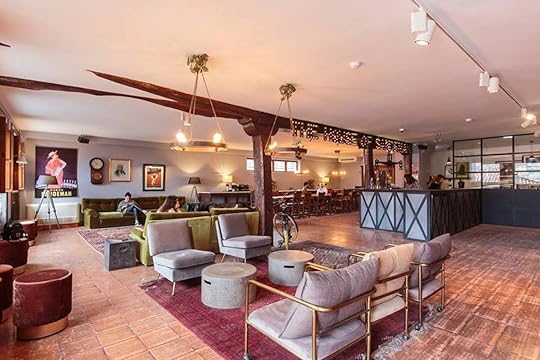
Photo: The House of Sandeman Hostel and Suites/Facebook
For wine lovers, you may not find a more perfect hostel than the House of Sandeman, set atop the Sandeman wine cellars, across the Dom Luis I Bridge from the center of Porto. The world’s first branded hostel boasts fantastic views of the River Douro, whether from nine of its exquisitely decorated suites or from the George Restaurant and Bar. The rooms all feature hardwood floors and expansive windows, so you can enjoy waking up to scenes of Porto’s unique and eclectic architecture. And, of course, you can visit the Sandeman Cellars and taste port wine, a tradition that dates back to 1790.
Hostel Lullaby
Chiang Mai, Thailand

Photo: Hostel Lullaby Chiangmai/Facebook
The common area at the Hostel Lullaby is one of the more unique you’ll find in a hostel, a large glass greenhouse that feels a bit like socializing in the Southeast Asia section of an indoor conservatory. If that conservatory served free snacks and had a patio with yoga classes. Cool as the greenhouse is, if you tire of spending your days there, you’re also a short walk from Chiang Mai’s most famous monasteries at Wat Phra Singh and Wat Chedi Luang. Once you return, you’ll be laying on one of the hostel’s five-star pillow top mattresses, providing one of the most comfortable hostel sleeps you’ll ever have.
Hostel Majdas
Mostar, Bosnia and Herzegovina

Photo: Hostel Majdas Mostar/Facebook
The accommodations at the first hostel to open in Mostar after the civil war of the 1990s are perfectly clean and comfortable. But the reason to stay at the Hostel Majdas isn’t so much for the beds or the cake Majdas herself makes. It’s the tour. Bata’s Crazy Tour is without question the most immersive, personal tour of this former wartorn city. Bata takes you through the city, up to a mountain waterfall, and into a local home, interspersing the journey with unbelievable stories from the turbulent war years. Since people often stop in Mostar during a summer holiday to Croatia to dip their toes into Bosnian culture, this tour is the perfect way to learn a lot about the country in a short amount of time.
Star Hostel
Taipei, Taiwan

Photo: Star Hostel/Facebook
The modern Asian design we see in American luxury hotels is largely drawn from the sort of everyday décor on display in cities like Taipei, and nowhere is this more obvious than at the Star Hostel. Here you’ll walk through bright common areas with floor-to-ceiling windows, dotted with tropical plants and light woods. The Green Lounge is like a serene Asian spa where you can meditate while sitting on the floor and gain a sense of calm even when other travelers bustle around. The rooms are similarly done up in simple woods and whites, and though not as luxurious as Asian-inspired hotels back home, the Star Hostel is equally aesthetically impressive.
USA Hostels Ocean Beach
San Diego, California
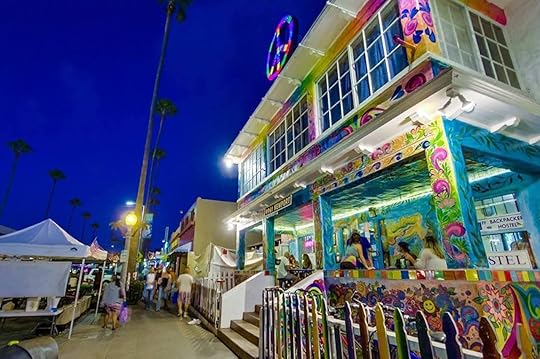
Photo: USA Hostels Ocean Beach/Facebook
The lone stateside hostel to make the cut is this psychedelically painted spot on Newport Avenue in San Diego’s Ocean Beach. In addition to being literally seconds from the sand, the hostel does more to help you explore the city than most full-service hotels. On Sunday, you can take a shuttle to the San Diego Zoo, Sea World, and Downtown San Diego. Twice a week the hostel shuttles guests to hiking at Cowles Mountain and also offers a twice-weekly shuttle to La Jolla. It’s got a weekly beer pong tournament, a beach bonfire with s’mores, and a farmers market out in front. So for a cheap beach vacation to Southern California, this is easily the best option you’ll find.
Adventure Q2
Queenstown, New Zealand

Photo: Adventure Q2 Hostel/Facebook
This smaller, more centrally located offshoot of the Adventure Queenstown Hostel gives the same worldly, laid-back style as the original in a much more action-packed location. It sits just across from the popular Village Green, which means that by day you’ll be able to stroll outside and enjoy a beer with other leisurely travelers and by night be able to walk feet to the nearest bar. You won’t find much in the way of private rooms here, either, so be sure to wear yourself out bungee jumping, hiking, hang gliding, and generally risking your life so your roommate’s snoring won’t keep you awake.
We Love F. Tourists
Lisbon, Portugal
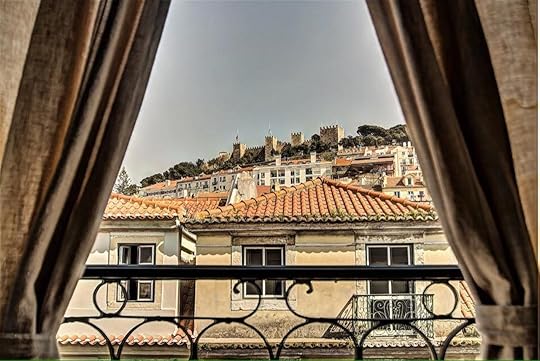
Photo: We Love F****** Tourists/Facebook
The “F” stands for exactly what you think it does, which at first glance might make it an unlikely pick as the best hostel for female solo travelers. But top the list it did, as this Lisbon hostel set at the juncture of Praca de Figueira and Rossio squares rates highly in nearly every category. The location is prime, about five minutes from Barrio Alto and Cais do Sodre, and walking distance to the museums, parks, bars, and restaurants of the Alfama neighborhood. The hostel organizes walking tours and pub crawls of the area, so you can make the most of the location without any guesswork. 

More like this: The 15 coolest hostels in Europe
The post The world’s best hostels for solo travelers appeared first on Matador Network.

Visit Edmonton, Alberta, Canada
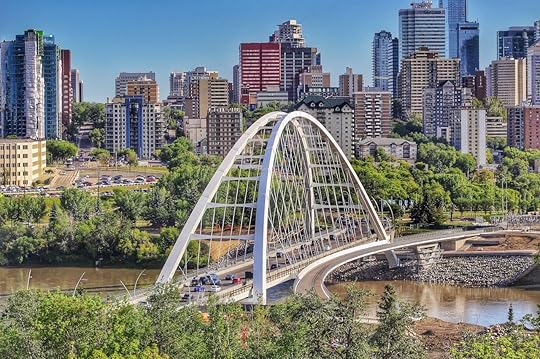
Snuggled between the Canadian Rockies of British Columbia and the flat open plains of Saskatchewan lies the sunny province of Alberta. Diverse landscapes of emerald gleaming lakes, dense boreal forest, and jagged mountain peaks draw visitors year-round. Many use Calgary as their gateway, not ever making it to the provincial capital of Edmonton, a three-hour drive north up AB-2. As locals are quick to call out, this is a mistake. With unusual malls, expansive parks, multicultural festivals, and quirky museums, Edmonton is a vibrant city that stands apart from other urban hubs in Canada.
Edmonton was once dubbed the “City of Champions” as a tribute to the reign of the Edmonton Oilers during the Wayne Gretzky era and to the city’s rapid rebound after being trounced by a tornado in 1987. Now a more common catchphrase is used, which represents the rivalry between Edmonton and its neighbor, Calgary. “The Battle of Alberta” describes how the province’s two largest cities have competed in nearly everything since Edmonton edged out its southern counterpart as the provincial capital back in 1905. While Calgary has a number of cool draws — including the legendary Calgary Stampede rodeo — Edmonton, a cosmopolitan metropolis of one million, is as engaging as any city in Canada.
You can surf, zip-line, or play mini golf inside the continent’s largest mall.

Photo: Nick Fox/Shutterstock
Picture the Mall of America. Shops, rides, restaurants… the whole scene. Now double that, add a crew of surfers, and you’ve got the West Edmonton Mall. This massive shrine to all things commercial is the result of the city’s desire to bring world-class shopping and entertainment to Edmonton, and it’s the biggest such facility anywhere on the continent. Don a pair of comfortable shoes for the trek around this 5.3-million-square-foot facility, which features over 800 stores and attractions. If you make it through half in one trip, you’re a full-on champion.
There’s also a five-acre, tropical waterpark with a wave pool, beach, hot tubs, and slick cyclone water slides. It may be totally incongruous in the Great White North, but it makes for a solid way to warm up in the winter. There’s even a simulated surfing experience and the world’s largest indoor zip-line flying overhead. Besides shopping and riding waves, you can also plunge down below the water in a submarine to check out the sea life caverns. There’s also a skating rink dubbed the Ice Palace and the world’s largest indoor triple-looping roller coaster, in case you weren’t already impressed.
As awesome as it is, the mall can be a bit much, for sure. Sometimes you just want to buy a gift for your special someone back home without feeling the constant urge to grab a putter and throw down a round of electric mini golf. For these instances, head across town to the Old Strathcona Farmer’s Market. Edmonton’s largest indoor farmers and craft market operates year-round, and its vendors sell just about anything imaginable. You can try on a new beaded bracelet, admire the details of a landscape painting, or even start a pottery collection with a colorful serving plate. It’s also a go-to for farm-fresh produce.
Edmonton has the longest continuous park in North America.

Photo: 2009fotofriends/Shutterstock
Edmonton sits alongside a mix of over 20 major parks, ravines, and lakes covering 18,000 acres in size and 30 miles in length, all joined together by park trails. And you can easily reach these via an ingenious funicular, an indisputably awesome mode of transportation that Canadians have adopted with enthusiasm (not so much in Calgary, however, another point for Edmonton). This barrier-free, mechanized system allows you the opportunity to make a unique urban escape and explore the lush river valley within minutes of the heart of the city. From downtown, take the 100 Street Funicular to the North Saskatchewan River Valley.
Once you’ve reached the green spaces moments after being downtown, you may sight any number of wild animals. Keep a respectful distance as you greet porcupines, deer, coyotes, skunks, hares, and beavers in their home environment. When hunger strikes, cruise with the crew and staff of the Edmonton Riverboat, who are known to serve up stuffed porchetta, creamy mushroom risotto, and fragrant rosemary chicken to guests on the water. Hit this experience at sunset and you’re once again a champion in the former City of Champions.
The “Festival City” celebrates its many cultures.

Photo: Angela Ostafichuk/Shutterstock
The people of Edmonton love music and the arts. So much so that their home has been dubbed “Festival City” for the number of festivals it hosts each year, and you ought to be able to dive right into the celebrations. In August, the Edmonton Folk Festival happens, bringing a hefty dose of music to the city, and that same month you can taste the ethnic offerings at the Heritage Festival — preferably with a bowl of Scottish haggis or fried African plantains in hand. In winter, the Ice on Whyte Festival features ice carvings on buzzing Whyte Avenue, and yes, there’s plenty of hot chocolate.
Quirky museums showcase neon signs, modern art, and cowboy boots.

Photo: alarico/Shutterstock
First opened to the public back in 1967, the Royal Alberta Museum recently expanded and moved into a massive new facility in downtown Edmonton’s architecturally appealing arts district. Now the largest museum in western Canada, it’s packed with fascinating natural artifacts, including an Ice Age exhibit with casts of a wooly mammoth and mastodon. Even if you aren’t into tiny creatures, the Bug Gallery — where they’ve recreated natural habitats for wasps, bees, ants, butterflies, moths, and more — is a must. Learn about the diversity and importance of these small invertebrates from Alberta and around the world. If it turns out you’re more into bugs than previously thought, try your hand at weaving your own delicate spider web.
At the Art Gallery of Alberta, the building itself — a dizzying swirl of glass and metal — is an art piece to be admired. The 6,000-work collection highlights contemporary Canadian artists, with a special focus on artists from Alberta. A less conventional gallery is the small, outdoor Neon Sign Museum, which captures the history and landmarks of Edmonton’s past through none other than the city’s neon signs. This museum is free to visit at any time, day or night. Next, stop by the world’s largest cowboy boot located at the One-Stop Biker Shop. A remnant of the Western Boot Factory that once inhabited the space, the 40-foot tall, fiberglass western boot landmark stands proudly as an artistic and technical marvel on the west end of the city. This recently re-heeled, refurbished, and repainted boot is definitely the best place in the city for selfies. 

More like this: This underrated Canadian wine region is the next Napa Valley
The post Why you should visit Edmonton on your next Alberta trip appeared first on Matador Network.

Outdoor opportunities in Taiwan
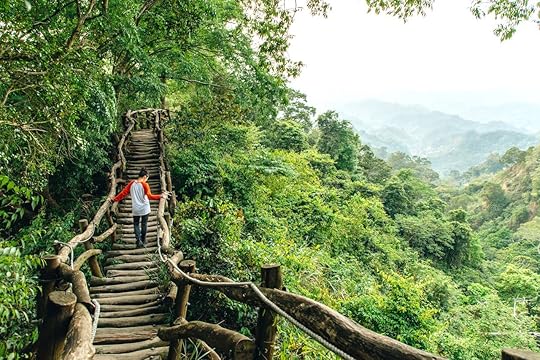
Taiwan is a sweet-potato-shaped island surrounded by rugged coastline and long stretches of beaches, with towering mountain ranges running north to south in the center. It’s always been a popular destination for other East Asian tourists for its natural sceneries, most notably YangMingShan and Sun Moon Lake, but its outdoor opportunities have long been overlooked by travelers from the rest of the world in favor of bustling Taipei. Taiwan is secretly one of the best backpacking destinations: easy to get around, with great railway and bus connections, and friendly to budget and solo travelers. Whether you are a water-sports lover, a hiker, or you want to have a go at soaring above the mountains, there’s something for every type of outdoor lover in Taiwan.
Hike the many national parks of Taiwan.
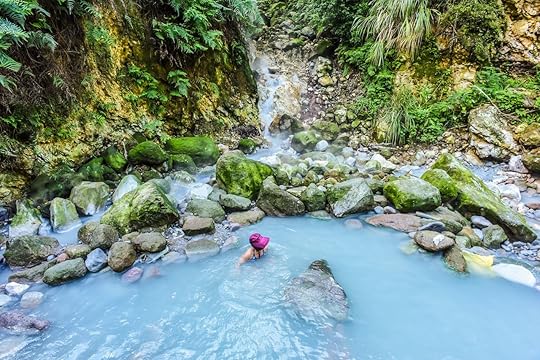
Photo: weniliou/Shutterstock
Taiwan has several stunning national parks with trails suitable for hikers of all levels. YangMingShan National Park half an hour north of Taipei is a popular choice with a range of easy day hikes to choose from. The eight-mile trek to Lengshuikeng is one of the most scenic and well-rounded trails, ending at a milky pond with a sulfur hot spring nearby for a leg soak.
For something more challenging, Yuan Zui Mountain in Dasyueshan National Forest Recreational Area is a great choice near Taichung. The hike is not for the faint of heart, with sections of rope-assistant rock climbing that takes you to the summit, itself a triangular-shaped rock outcrop. You can also try to conquer awe-inspiring mountains such as Xueshan, the second highest mountain in Taiwan. Its name translates to Snow Mountain, and it is located in the Shei-pa National Park, standing at 12,750 above sea level. The three-day, two-night trek is more popular than the highest mountain for its unique sceneries, such as the dark forest and glacial features.
Go on a cycling adventure.
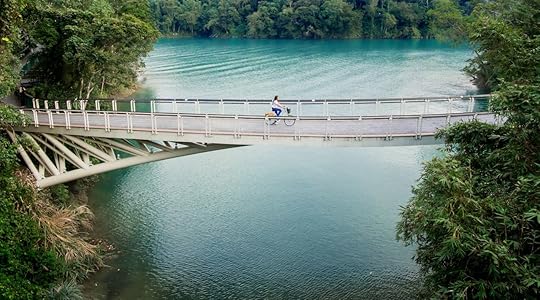
Photo: PHUWIN PALASINGH/Shutterstock
While it might be surprising, Taiwan is actually a very cyclist friendly-island with many beautiful paths around the entire island. In the northeast, the Dongshan River Bicycle Trail in Yilan is a great combination of nature and city path. The 15-mile path conveniently starts at the Dongshan Railway Station, passing the nearby forest park and water park in addition to landmarks such as Qingshui Bridge and National Center for Traditional Art, ending at the Wujie Tide Gate.
But the most scenic is the circular route around the Sun Moon Lake in the heart of Taiwan. The lake has long been famed for its serene blue water, and the three-hour trail gives you an opportunity to admire it from every angle. The path is flat and well paved, making this suitable for families.
SUP across stunning lakes.
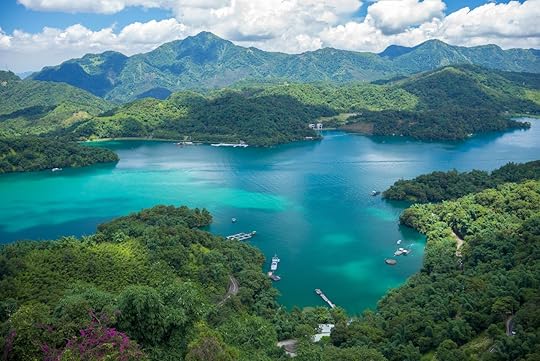
Photo: Richie Chan/Shutterstock
Another way to enjoy the beauty of Sun Moon Lake is to explore it on the water with a stand-up paddleboard, or SUP. The smooth expanse of the lake covers an area of three square miles and is beginner friendly. It’s hard not to enjoy the view of the mountains as you glide effortlessly across the lake.
For an option close to Taipei, SUPing is an ideal way to explore the Shen’ao Elephant Trunk Rock in Ruifang. Paddle under the sandstone archway of the trunk and be awed by the rugged landscape of the northeast. Further down south, Kenting’s crystal blue water is perfect for all watersports including stand-up paddling. Many tours offer snorkeling along with kayaking or paddleboard options.
Surf from east to west to south.
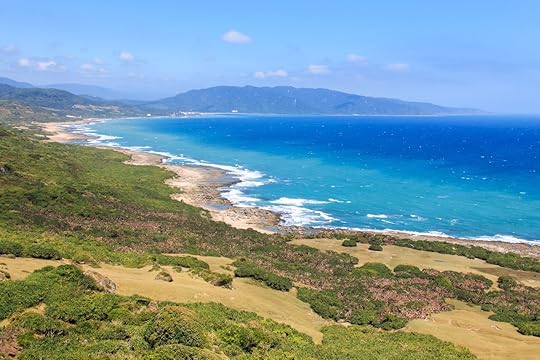
Photo: outcast85/Shutterstock
Since Taiwan is an island between the East China, South China, and Philippine Seas, it shouldn’t be surprising that there are some gorgeous surf spots. Surfing is still a relatively new sport in Taiwan. Some of the best surf locales are located on the east and south coasts. The eastern coastline is more complex and rocky, which means more care is needed when selecting a surf spot — particularly for beginners.
In the east, Yilan County’s famous surf spot is on Honeymoon Bay. It’s considered one of the best on the island and is right by the train station. An alternative would be to learn to surf on the west coast in a place like Taichung where the beaches are sandy. Kenting in the south is the ideal choice for those who want year-round ideal conditions with its tropical climate and sandy beaches. Kenting even has a designated surf zone in the South Bay.
Cross paragliding off your bucket list.

Photo: Jeff Hung/Shutterstock
The mountains of Taiwan are perfect for more than hiking. Paragliding is popular here, where you can view the stunning landscape from on high. Most of the options are tethered, but if you have the courage, you can learn to do it yourself. One of the best spots to paraglide is in Nantou near Taichung. If the wind direction and visibility are good, you can see Sun Moon Lake and the Puli township.
An option closer to Taipei is the Green Bay in Wanli, where steady sea wind means that you are guaranteed a liftoff there. You’ll also see the sparkling blue water of Green Bay itself. Other great paragliding spots across Taiwan includes Wai’ao in Yilan, Saijia in Pingtung, and the Taitung Luye Highland. 

More like this: The best hiking in China
The post Why Taiwan was made for outdoor lovers appeared first on Matador Network.

Amazing shrines and temples in Kyoto
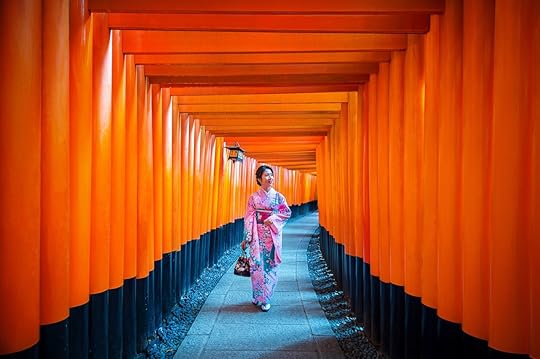
Kyoto is one of the most bustling and beautiful cities in Japan. With more than 2,000 Buddhist temples and Shinto shrines, including 17 UNESCO World Heritage sites, it’s a perfect place to take in the country’s history and magnificence. All of those options are a blessing and a curse, however. Because Kyoto is filled with so many temples and shrines, navigating which to go to can be overwhelming — especially if you want time left to eat, shop, and explore other parts of the city.
If you’re on a tight timeline or visiting Kyoto on a budget and want to see the best of the best, these are the five must-see shrines and temples to visit.
1. Fushimi Inari Taisha
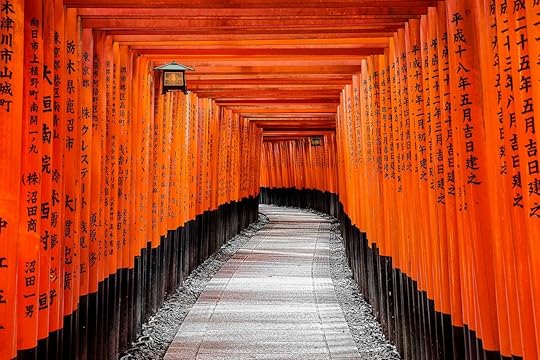
Photo: Dr_Flash/Shutterstock
Fushimi Inari is the most important Shinto shrine dedicated to Irani, the god of rice. It was established in the year 711, which predates the capital’s move to Kyoto in 794. Fushimi Inari is famous for its thousands of vermilion torii gates, which span a network of 760-plus feet of trails. Your first stop when you arrive is the main hall, then you can ascend into the forest behind the ground’s principal buildings. While some may want to hike the entire summit — which takes two-to-three hours — we suggest trekking 45 minutes to the Yotsutsuji intersection where you can enjoy sweeping views of the city below. While Fushimi Inari is quite crowded during the day, it’s a peaceful and gorgeous place to visit after dusk, a time when you’ll practically have the place to yourself. Take note: Go in the evening at your own risk as nocturnal wild boars roam freely in the forest foraging for food in the later hours.
2. Yasaka Shrine
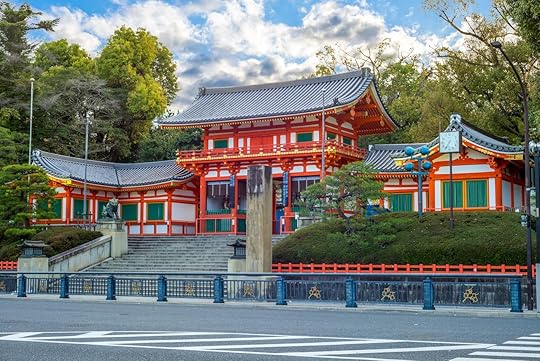
Photo: Richie Chan/Shutterstock
Yasaka Shrine is adjacent to Maruyama Park, which makes it one of the most convenient shrines to visit during a trip to Kyoto. Previously known as Gion Shrine, it was founded more than 1,350 years ago, and it’s a must-visit if you’re walking through Kyoto’s Gion District, which is famous for the geishas who walk through on their way to work. The main hall combines the shrine’s inner sanctuary and offering hall into one building, which sits next to a dance stage that’s lit by hundreds of lanterns at night. Yasaka Shrine is best known for the Gion Matsuri festival in July, which is one of the most prominent in Japan and draws hundreds of participants. Maruyama Park is also one of the best places to view the cherry blossoms in Kyoto, which makes Yasaka Shrine an extra special place to be in the springtime.
3. Kinkaku-ji
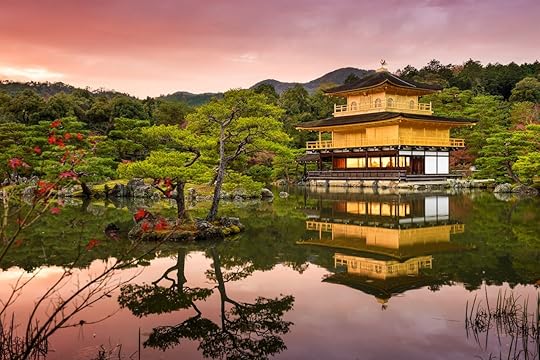
Photo: Sean Pavone/Shutterstock
Also known as the Golden Pavilion, this breathtaking Zen temple is famous for its gilded exterior. Kinkaku-ji was formerly known as Rokuon-ji, and it was a retirement villa for the shogun Ashikaga Yoshimitsu. The temple was burned down numerous times, most recently in 1950 when it was set ablaze by a fanatic monk. The current structure was constructed in 1955 and features two top floors that are completely covered in gold leaf. While visitors are not allowed to enter the temple, Kinkaku-ji is worth a visit just to get a glimpse of its beautiful exterior and lush grounds. If you go during cherry blossom season or in the fall when the trees are covered in red and orange, you can enjoy matcha and sweets in the tea garden right outside the main temple area and take in the beautiful scenery. Pro tip: Travel through Kyoto to Kinkaku-ji by bike for the full experience of the area.
4. Ginkaku-ji
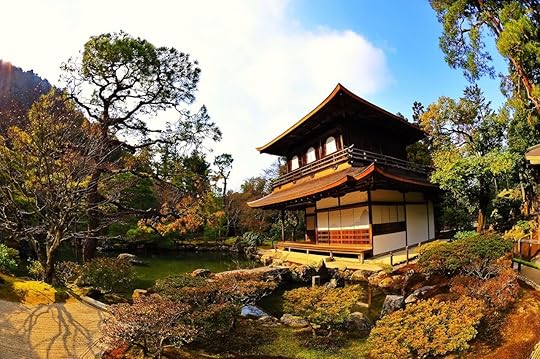
Photo: Jordan Tan/Shutterstock
Located along Kyoto’s eastern mountains, this Zen temple is also known as the Silver Pavilion, but not because it features an embellished exterior like the Golden Pavilion. Shogun Ashikaga Yoshimasa built Ginkaku-ji in 1482 as his retirement villa and modeled it after his grandfather’s retirement villa, the Golden Pavilion. It’s believed that the nickname was given to Ginkaku-ji because its construction was in such contrast with its gilded inspiration. When visiting this Zen temple, you can enjoy a beautiful sand garden and moss garden, which features ponds, streams, islands, and bridges that offer a beautiful break in nature. The path through the moss garden climbs a hill behind the buildings where you’ll find sweeping views of the temple grounds and city below.
5. Shorenin Temple
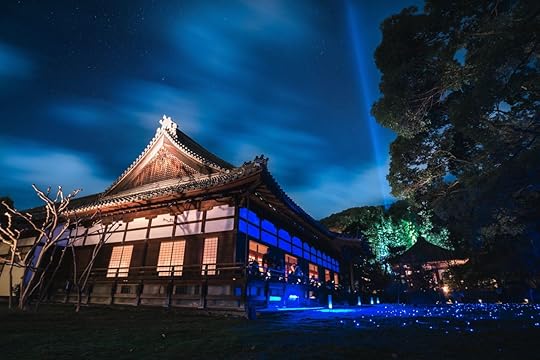
Photo: Nodtiez/Shutterstock
While you’ll still come across tourists at Shorenin, you’ll likely find it less crowded than some of the other spots on this list. Shorenin is of the Tendai sect of Japanese Buddhism, and it’s one of Kyoto’s Monzeki temples, which traditionally had head priests who were members of the imperial family. It was founded in the 12th century by Emperor Toba as a residence for him and his son while they were studying under Enryakuji Temple’s head priest. Over time, it became a temple in its own right. A winding path leads visitors through the different temple buildings and gardens, which includes the art-filled Kachoden drawing room, Shijokodo Hall, a tea house, and a bamboo grove. The real treat comes during spring and fall when Shorenin is open in the evening hours, and the gardens are illuminated. 

More like this: 8 ways to save money on your trip to Kyoto
The post The 5 most breathtaking shrines and temples in Kyoto, Japan appeared first on Matador Network.

Loose change in US airports total

It’s a phenomenon all travelers can relate to: going through airport security and discovering a few quarters buried in your pockets at the last second. Hurriedly, you toss them into the bin before passing through the metal detector. Once you’re on the other side, you’re rushing to gather your belt, laptop, shoes, and other belongings from the bin, maybe notice those coins at the last minute and think, “Nah. What am I gonna do with 23 cents?” Well, you’re not alone. Hundreds of thousands of travelers leave change behind at the airport, and you know what they say — small change adds up.
According to the Fiscal Year 2018 Report to Congress filed by the TSA, the security agency collected a total of $869,839.56 in 2017, including $36,684.12 in foreign currency that was converted to USD. The report also provides a breakdown of money collected by the airport, with Los Angeles International Airport topping the list with $62,230.79 in unclaimed money.
All of this lost change doesn’t just disappear into the void. Once collected, the money is transferred to hub airports around the country, which send receipts to TSA headquarters. Ultimately, the money ends up in a Special Fund account. The TSA is then allowed to spend that money “for the purpose of providing civil aviation security.” So when you do leave change behind at the airport, you’re a direct (if unwitting) investor in future airport security. 

More like this: Study shows that security trays are actually the grossest part of flying
The post People left behind $869,839 in loose change at US airports in 2017 appeared first on Matador Network.

What to do in Salisbury, England

As one of England’s most beautiful and famous cities, Salisbury is full of amazing things to see and do, yet the city has somehow remained off the itinerary of most visitors to England. Most stop at Stonehenge and bypass the city entirely despite it being a mere 18-minute drive from the monument. The town is also just two hours from London by train, and it’s perfect for a day out or a short break as it’s a city rich in heritage and history and offers a tremendous sense of community. We’d recommend forgoing the lines at Stonehenge altogether and spending your whole day in this welcoming city instead. But if you absolutely must see the ancient pile of rocks, here’s why you should at least add Salisbury to your Stonehenge excursion — we bet it’ll be the part of the day you’ll actually remember for years to come.
Hike across the area’s history at Old Sarum.
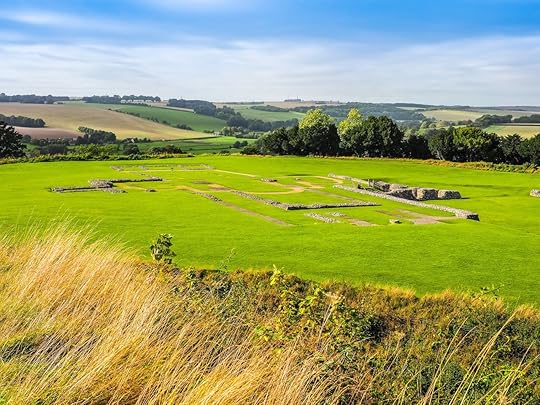
Photo: Claudio Divizia/Shutterstock
Salisbury was once known as Sarum and was actually located two miles from its current location, originally built around an ancient Iron Age hillfort. It was settled by the Normans who built the first cathedral within its walls in 1020, but with an expanding population, it was decided that the settlement would relocate in the 1200s. To choose the exact location, the bishop got a bow and arrow and shot a deer; where the deer fell marked the foundation of the new city of Salisbury.
While bow hunting on the fringe of town isn’t encouraged these days, you can still visit the ruins of Old Sarum and walk the boundaries of the original settlement. The Iron Age hillfort is easy to spot, with two raised earth banks separated by a massive ditch. You can also visit the remains of a castle built in 1070 by William the Conqueror. The 29 acres of grounds make for a good long walk and an even better picnic — the views across the Wiltshire countryside and the “New Sarum” city skyline are spectacular.
Stroll through medieval streets and an original charter market.
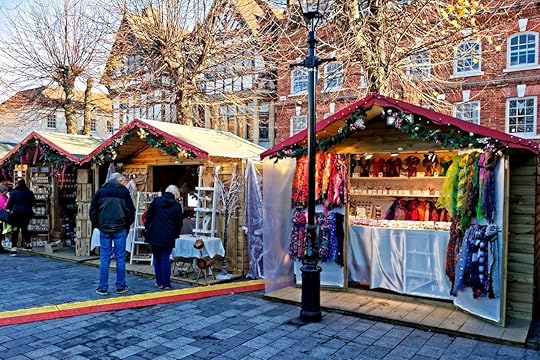
Photo: Andrew Harker/Shutterstock
Today, the town center is full of independent shops selling anything from jewelry to crafts, clothing, and household goods. There’s even a candy shop with a fudge-shaped Stonehenge replica, with the added bonus of no random people jumping in front of your photo. With names like Butcher’s Row, echoes of the medieval past live on as you wander the streets of the old city complete with its timbered buildings and 14th-century clocktower. Twice a week in the center of town, you’ll find a charter market — these are similar to normal markets in that they sell fresh regional produce and all manner of items, but they’re unique in that they were started by the issue of a Royal Charter. Charter markets were established in many English towns by royal decree dating back to the Middle Ages. Salisbury’s charter was granted in 1219, making it one of the oldest in England.
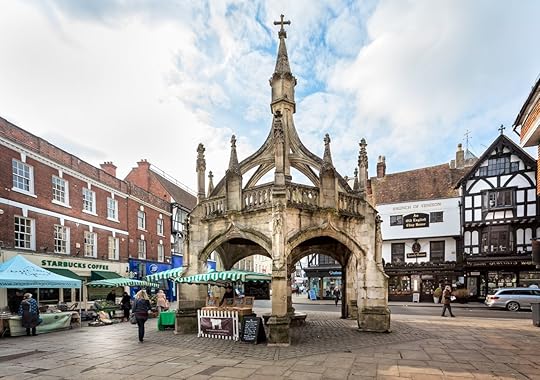
Photo: Nigel Jarvis/Shutterstock
If you fancy a pint after walking through the market, stop by the Haunch of Venison. This is one of the oldest pubs in town, with a heritage dating back 700 years. Its enormous timbers came from old ships, and the pub is full of quirky rooms and spaces with creaking floorboards. Oh, and the beer is pretty good too.
Visit England’s most historic cathedral.

Photo: Christopher Hotton/Shutterstock
Salisbury Cathedral is the defining landmark of the city, completed in 38 years from 1220 to 1258. It has the tallest spire in England at 404 feet in height. The medieval cloister is stunning to walk around, and the cathedral itself is magnificent even for those who don’t normally frequent churches when they travel. Highlights include the world’s oldest clock and the structure’s beautiful carvings and monuments. The site also hosts regular art exhibitions.
One of the best ways to experience the cathedral is to take a tower tour. This is not for the faint-hearted as it involves a climb of 332 steps, some quite narrow in places, but the experience offers a fascinating insight into the history of the building. These must be booked in advance and include a birds-eye view of the cathedral interior from above and the medieval glasswork, along with the architecture within the roof and views stretching for miles.
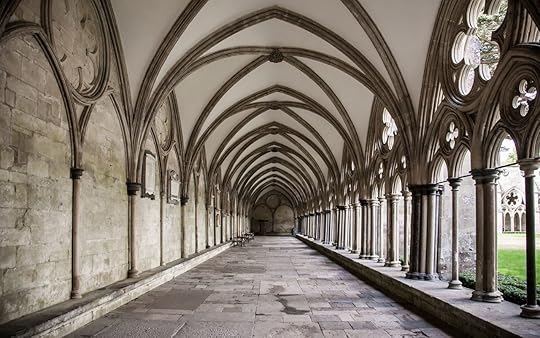
Photo: littlesam/Shutterstock
Surrounding the cathedral are the famous water meadows beside the River Avon. Follow the trails here and you’ll see the landscape that inspired the painter John Constable when he visited in 1830. The Cathedral Close is another Salisbury treasure with many historic buildings, and the Salisbury Museum is close by with its collections, including archaeological finds from Old Sarum.
Check out an original copy of the Magna Carta.

Photo: Salisbury Cathedral/Facebook
One of the most famous highlights in Salisbury is the Magna Carta, famous as a symbol of justice. The Magna Carta was signed in 1215 by King John at Runnymede as an attempt to stop warring between his barons. The charter was written on parchment and is significant as one of the first formal documents to set out basic rights — including the right to a free trial. Today there are just four original signed copies in the world, and one is in Salisbury. This is displayed within the Chapter House of Salisbury Cathedral and is a must-see for anyone visiting the city. 

More like this: Skip the Cotswolds — Blackmore Vale is the storybook England of your dreams
The post Forget Stonehenge and head to Salisbury, the best medieval city in the UK appeared first on Matador Network.

Matador Network's Blog
- Matador Network's profile
- 6 followers



